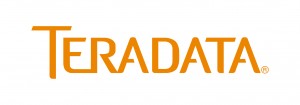This article is an excerpt from GovLoop’s recent market trend, “How Smart Data Management Powers Smart Cities.” Download the full report here.
Data is the essence of cities, particularly those using it to improve their residents’ quality of life. But many cities use only part of their data, missing the full scope of available benefits. The rise in devices producing data is making it harder for cities to handle the large volume of data, much less act on it to make data-driven decisions that are valuable to their constituents.
“It’s an enormous volume of data to deal with,” said Roger May, Partner Manager at Teradata. “It’s a daunting task for these cities to figure out.”
The use of analytics and data sharing is key to moving forward, May said. “You have such a diverse set of data that is now available to use, and to really drive insights, you need to be able to drive analytics at scale.”
Municipal agencies are often isolated from one another, however. As a result, they duplicate efforts and can’t uncover cross-agency patterns that could help cities. Missed opportunities in data integration and analytics force higher costs, lower public safety, diminished public services and less understanding of crime and resource trends.
City governments without smart data management struggle to best serve their citizens, glimpsing a fraction of the wealth of data available to them.
Smart cities connect information and communication technologies to share data. They need an analytics platform in which data gathered from an ever-growing range of sources uncovers trends and makes insights available to city officials and residents. To get there, cities must invest in smart data management. Smart data management secures data for advanced analytics, which can detect various actionable patterns that can either be automated or monitored to improve processes. For city governments, smart data management lights the way to clear, actionable insights.
IoT plays a key role in this data strategy. IoT describes the huge network of devices and physical objects, or “things,” that can connect to the internet, communicate with one another and share valuable data.
Cities will need sufficient data management scale and capacity to capture, analyze and view IoT data in context, or they will be unable to extract insights. Adopting smart data management helps city officials make data-driven decisions in real time by automating data from various IoT-enabled sources. Data is unified across domains, such as lighting, parking and transportation services. Layering in weather, census, event and other data reveals cities’ full operational potential by helping leaders understand the information available to them for next steps.
“The outcomes that matter in a smart city have not fundamentally changed,” said Peeter Kivestu, Teradata’s Industry Consultant specializing in logistics, transportation and smart cities. “They still are safety, efficiency and the user
experience.”
“What’s changed is actionability…When you bring multiple kinds of data together, the new benefits, or the new issues that need to be tackled, become clear patterns,” he continued. “We call it discovery analytics. The analytics
‘discover the patterns.’… If you don’t have integrated data, you will simply miss those connections, and likely miss the opportunity.”
Smart cities are ultimately highly integrated, outcomes-driven operations that want to make the most of their data to improve the citizen experience and public services and discover new revenue streams.






Leave a Reply
You must be logged in to post a comment.